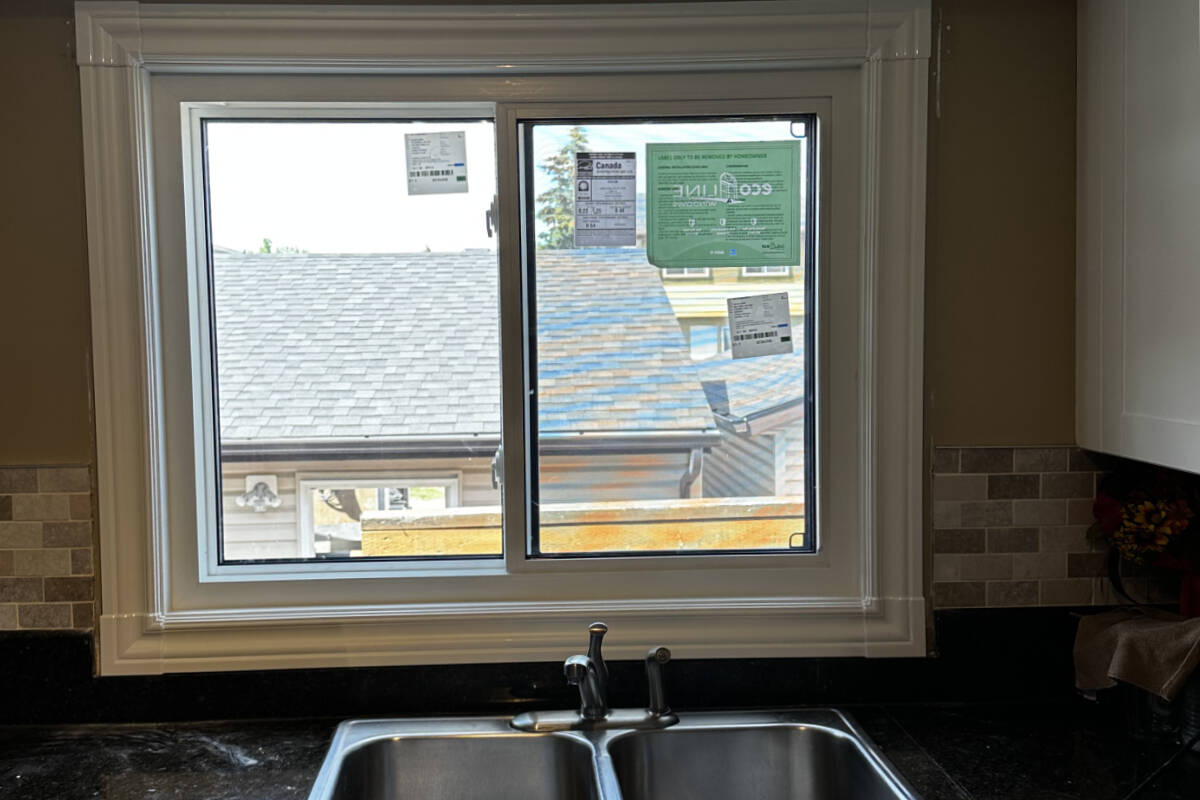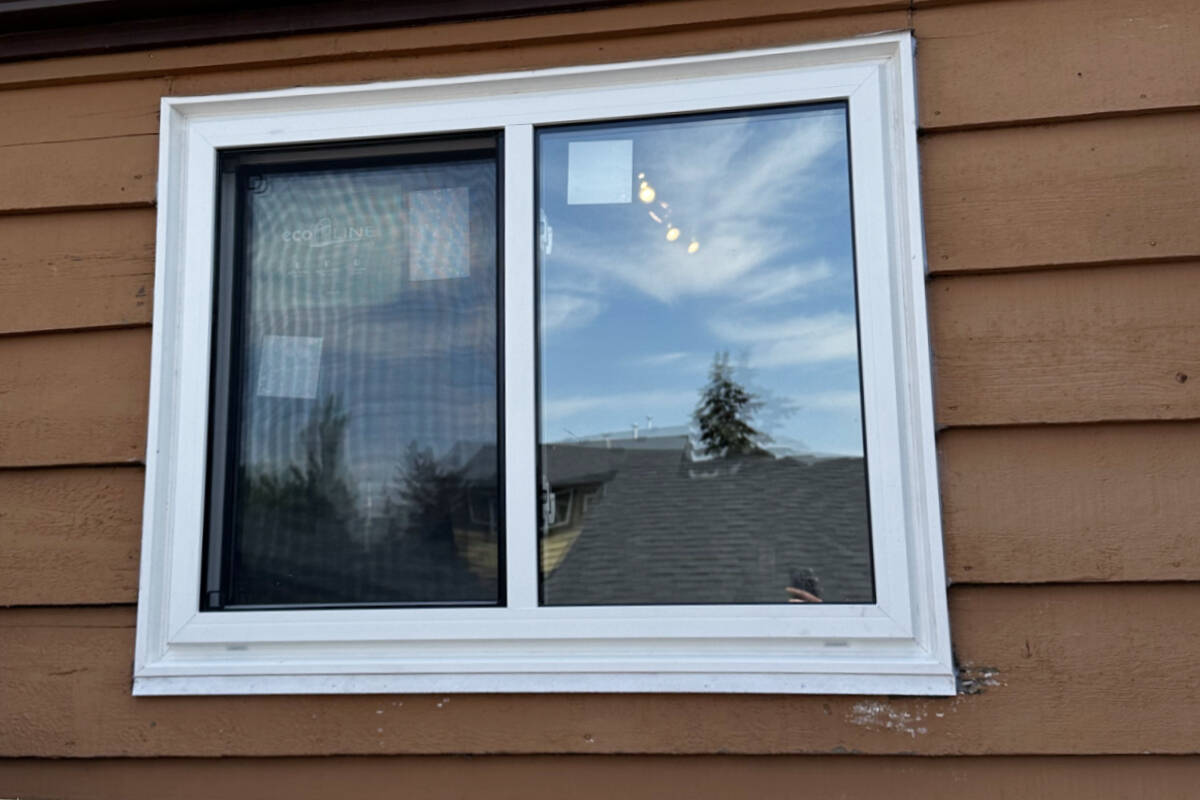Understanding window replacement costs: A guide for Langley homeowners

Save money on your next window replacement with the Ecoline Green Grant, find more information online at ecolinewindows.ca. Photo courtesy of Ecoline Windows.
Are you planning to enhance your home’s interior this summer by replacing the windows or upgrading the existing ones? One of the biggest concerns homeowners have when considering window replacement in their Langley homes is often the cost. Understanding why window replacement costs what it does can help you feel better prepared and more confident when tackling such an important home renovation.
The window and door experts at Ecoline Windows have created a comprehensive list of seven key factors that ultimately determine how much it will cost to replace or upgrade the windows in your home.
1. Type of Installation
The first factor to consider is what type of window installation makes sense for your budget and your home. You can opt for a full-frame installation or a retrofit installation.
- Full-Frame Installation: In a full-frame (tear-out) installation, your old window is completely removed down to the studs surrounding it. This allows window installers to address any issues with moisture or rotting wood. Your custom window comes with new jambs, exterior brick moulds, and interior trim. On average, full-frame replacements cost 10 to 15 per cent more than retrofit installations.
- Retrofit Installation: In a retrofit (insert) installation, new windows are inserted into your existing frames, leaving the jambs untouched. Aluminum capping is generally used on the outside to cover, rather than replace, the existing brickmould.
A full-frame installation is required for windows that are completely damaged or too old to fix, as a retrofit only improves the aesthetic and efficiency of the windows.
2. Number of Windows Being Replaced
The number of windows you plan to replace significantly impacts the overall cost. Assess your needs to determine how many windows you’ll need to budget for. Depending on the age and condition of your existing windows, you may need to replace just one window or all of them.
3. Location Within the Home
The location of the windows within the home also affects the cost. For example, a living room window typically has greater square footage than a bathroom window. A bathroom window may have an opening mechanism, while a hall window might be a non-operative window.
4. Type of Window Material
The materials you choose also directly impacts the quality, longevity, and cost of the windows. Some common materials are vinyl, aluminum, and fibreglass.
- Vinyl Windows: Vinyl is energy-efficient, low-maintenance, and offers excellent longevity. They’re also more affordable than wood or aluminum and offer better performance. Vinyl is non-corroding, UV-resistant, and can be insulated with foam for better energy efficiency.
- Aluminum Windows: Aluminum frames are strong, durable, and low-maintenance. They’re usually insulated to prevent moisture build-up and heat loss. Aluminum is also a cost-effective option but may not be as energy-efficient as vinyl.
- Fibreglass Windows: Fibreglass windows cost around 25 per cent more than vinyl but replicate the look of real wood without being high maintenance. Made from glass fibres and resin, they can be painted to match exterior décor, and they’re also rot-resistant, strong, and excellent insulators.
5. Size
Another factor is size. Larger windows require more materials and complex installation processes. For example, large picture windows are more expensive than smaller, standard windows due to the increased glass area and necessary structural support.
6. Double-Pane or Triple-Pane Windows
Triple-pane windows cost around 15 per cent more than their double-pane counterparts. While triple-pane windows are more energy-efficient and can reduce heating bills, their cost-effectiveness depends on your location and specific needs. Double-pane windows offer decent energy efficiency and noise reduction and are more affordable.
7. Style of Window
When replacing windows, you have an opportunity to choose styles that enhance functionality and aesthetics. The style of window you choose will also affect the overall cost of the renovation.
Single or Double Slider Windows: The sash (the part of the window that opens) slides back and forth.
- Hung Windows: The sash slides up and down vertically.
- Awning Windows: Hinged at the top, it opens outward from the bottom with a crank.
- Casement Windows: The sash opens outward like a door.
- Picture Windows: Large, non-opening panes, popular in living rooms.
- Custom Windows: Unique configurations of the above styles tailored to your needs.
Understanding these seven crucial factors that drive window replacement costs can help you feel more prepared when starting the process of installing new windows. Summer is a great time to tackle window and door replacements due to more agreeable, dry weather. If you’re considering replacing or upgrading windows in your Langley home, contact the experts at Ecoline Windows and Doors online today or by calling 778-400-2063.

